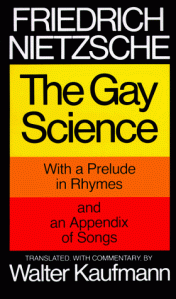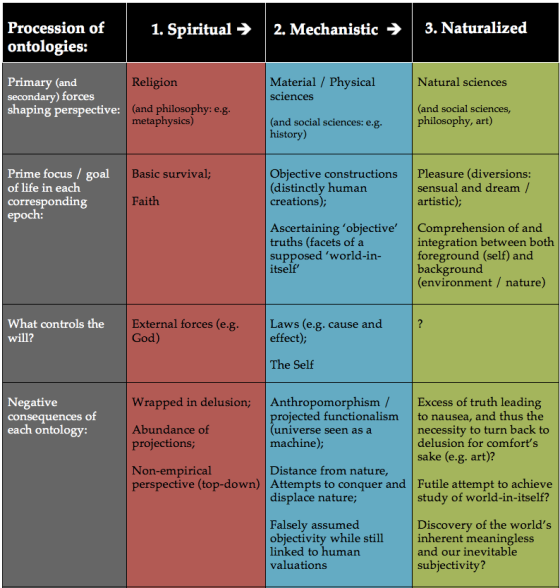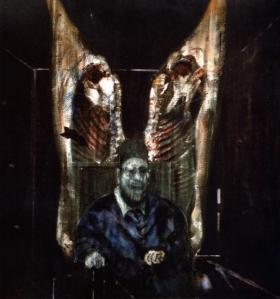Tag Archives: existentialism
Nietzsche’s Self-Styling, or How to Become an Aesthetic Phenomenon
Friedrich Nietzsche identifies art as a way to gain perspective on our existence and ease existential nausea, writing in Gay Science 107 (full text available here), “As an aesthetic phenomenon existence is still bearable to us,” creating a front between us and the “nausea and suicide” we realize due to honesty. Honesty (and thus nausea) finds its source in the realization of the inherent meaninglessness of the world of appearances as its witnessed through science and empirical observation — the naturalized perspective Nietzsche argued for throughout his work — instead of a religious lens. Nietzsche’s human is “filled with Dionysian joy and pride in his own artistry,” because without intrinsic order he is led to “the absence of a designing god [leading in turn] to a heightened joy in the artistic possibility of man” (Nussbaum 58). Art helps to bridge the gap between the role of religious order and the chaos that comes once the order is revealed as a delusion (see: “God is dead”); however, the art cannot just exist for its own sake. Art — the right kind of art — and an adaptation of its techniques in the creation of our own identities allows some room for optimism about the human condition because it permits us to create meaning.

An issue remains: Exactly how can we make ourselves into an “aesthetic phenomenon,” as Nietzsche writes in GS 107? The primary solution is self-styling: the use of artistic techniques to craft the self. To make the world, including the self, into an aesthetic phenomenon, not just must the techniques of artists must be copied, but their effects must be integrated into the self as well. Thus, not just the world but the self must be made aesthetic (Young 99). Artistic means are able to achieve this through self-styling, which allows self-deception and artistic perspective, countering honesty and meaninglessness.
Francis Bacon: The Visual Existentialist
According to Gilles Deleuze, painting is hysteria (45-6). Painting in the throes of hysterics attempts to go “beyond representation,” morphing “cerebral pessimism into nervous optimism,” and Bacon is an extemporary case of a hysteric painter because he clings neither to organic representation or complete abstraction, instead occupying a grey area between the two (Deleuze 45). Bacon exemplifies hysteria and is thus masterful at capturing a presence beneath appearances. This hysteria is being channeled by anxieties linked to the human condition not only in the sense of dealing with one’s inner self (see the vast quantity of fleshy imagery in Bacon’s works, such as Figure With Meat (1954), below), but one’s relation to the world. Freeland sees Bacon as an example of the cognitive theory — art as a language, blurring boundaries between representation and abstraction (154).
In this essay, I will argue that art can indeed convey philosophical messages by viewing the paintings of Francis Bacon through an existentialist lens. By “existentialist” I am referring to the system of thought that came into being in 20th century Europe stressing the actions of the individual (as a being-in-the-world who is distinguished by the fact they make an issue of their own being) as being the central means by which to interpret life’s significance. Existentialism stressed the tension between the individual and the society which he inhabited, as well recognition of the bountiful absurdity ruling the universe. Moreover, existentialists rebutted an essentialist viewpoint by asserting that existence preceded essence, or, that individuals weren’t defined by inherent properties, but instead their actions, which framed the way they were related to the external world. Bacon expresses his existential concerns using the ‘language’ of painting through a number of ways: emphasizing figure-ground relations, individual identity loss, confinement, and man as a physical organism. Moreover, Bacon’s art is of the category of non-mimetic realism, with surrealist influences, thus countering Plato’s idea of art as mimetic and unable to express philosophical thought because Bacon is able to convey such potent — if sometimes ambiguous — messages through his grotesque imagery. Continue reading

